Larkspur
by CMG Kathleen S.
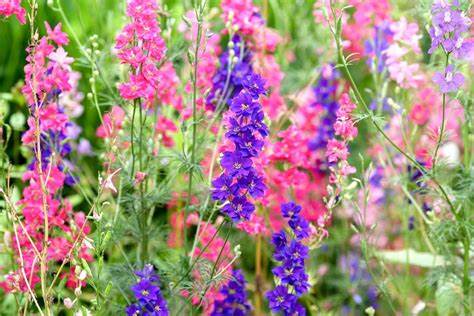
Larkspur phot from bhg.com
Larkspur is the quintessential addition to the cottage garden. The stately, elegant blooms compliment cosmos, roses, clematis, and meadow rue. There are a variety of colors, but the shades of blue are most desired. The artist Claude Monet created the “Grande Allee Tunnel” in front of his home in Giverny, France. It is an amazing cottage garden providing a profusion of color from foxglove, penstemon, phlox and larkspur (delphinium) with its multiple shades of blue.
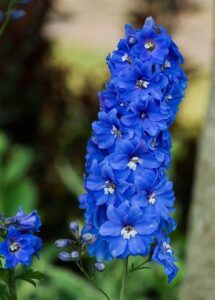
Delphinium photo from wallpaperflare.com
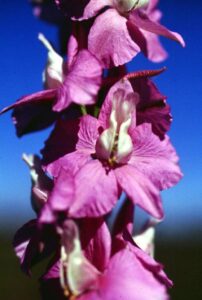
Larkspur photo from texassuperstar.com
The term “larkspur” can be confusing as it is often informally used interchangeably to identify two different plants from the Ranunculaceae family. Delphinium (Delphinium consolida) and Larkspur (Consolida ambigua) have similar spiked flowers. Delphinium is a perennial and is larger in flower and leaf size than larkspur and doesn’t do well in the Texas sun.
Giant Larkspur (Consolida ajacis) and (Consolida ambigua), a Texas Superstar® plant, are annuals. Consolida ambigua has purple, blue, white or pink blooms and stands 3 feet tall and 1 foot wide. It is hardy for zone 7. Fall is the best time to sow seeds or put out transplants in early spring.
Members of the Consolida genus can appear to be perennials because they self-seed easily. All Larkspurs (Consolida) have the same growing requirements. In Comal County it prefers full sun to partial afternoon shade in well drained soils. Mulch can be used to hold in the moisture. Soil pH should be neutral to alkaline. Depending on the variety, they are hardy in zones 2-9 and the height of their blooms can vary from 6 inches to 5 feet. Tall blooms may need to be staked and protected from strong winds. Larkspur easily reseed. To combat uncontrolled propagation deadhead them often. This will also encourage more blooms throughout spring.
Propagation is either by cuttings or seeds. Spring is the best time to take cuttings but be sure to take the cutting from the base of the plant, just above the soil surface. Remove excess foliage at the bottom, leaving a few at the top. Use rooting hormone. A mix of 1/2 potting soil and 1/2 perlite is suggested. Place the cuttings in a cool damp area, direct sunlight or a greenhouse should be avoided. Roots will be evident in a month.
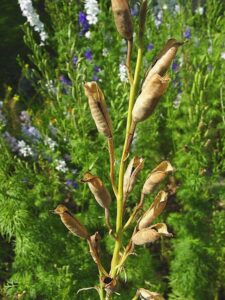
Larkspur seed pods. Photo from davesgarden.com
Seeds should be exposed to a period of cold; preferably in damp perlite inside a refrigerator for about a week. The seeds then need to be placed in a small container with a small covering of soil. Do not overwater. Germination will take a few weeks. It is recommended to direct sow the seeds between October and November for blooms the following spring. Cover the seeds lightly (1/4 inch deep), space about 4 inches apart then thin to 10 – 12 inches after they grow.
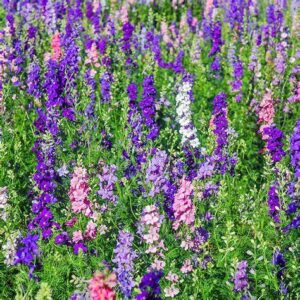
Photo from wallpaperaccess.com
Larkspur is elegant in containers. Use a pot that is at least 12 inches across to provide stability. Besides the beauty of this plant, pollinators love it. Larkspur is toxic if ingested by humans, pets and horses.
The plant is susceptible to powdery mildew, crown rot and leaf spot. Root knot nematodes and viruses can be also an issue. The best defense is adequate spacing, mulch, no soggy soil and no overhead watering. Disease resistant varieties are available. Do not allow weeds in the garden. At the end of the season cut the plant to the ground and remove any garden waste.
Sources: texassuperstar.com, bhg.com, thespruce.com, farmeralmanac.com, libguides.nybg.org